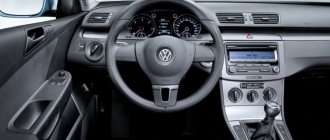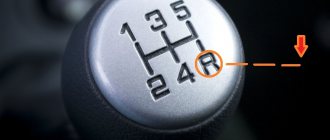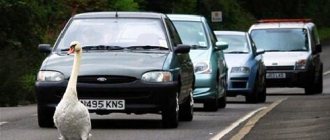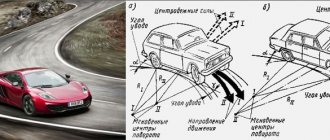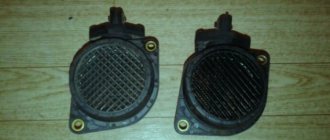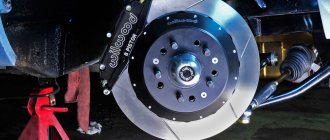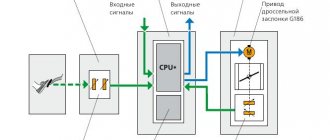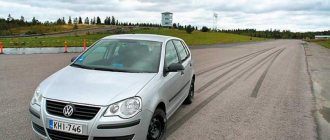Hi all! Many people want to get behind the wheel of a car and enjoy the benefits of a personal car. But before you do this, you have to go through a difficult learning curve. Practice clearly shows that the main problems arise with how to change gears correctly and with mechanics.
Initially, the most difficult thing for a beginner seems to be simply learning how to get going. But in just a few practical sessions this point can be mastered until it becomes automatic.
But switching to a manual transmission while driving is more difficult. This is a gradual process of developing a reflex that allows you to move from one speed to another in a timely manner and without being distracted by the lever itself, almost at the level of intuition.
The key rule is to always use the clutch pedal. In theory, you can learn to shift without a clutch, but then the box won’t last long and will have to be replaced soon. Therefore, when braking and accelerating, the clutch pedal and gearshift lever must work in tandem.
Important nuances
Ideally, the car should drive without jerking, moving from one speed to another. When buying a used car or a new car, all buyers always look at such a detail as the type of gearbox used. Objectively, the easiest car to drive is considered to be an automatic transmission. But it is important to understand that there are a number of types of gearboxes, and not a simple division into manual and automatic. We recently studied with you the features of sequential gearboxes, and also got to know the variator in more detail. I advise you to re-read and update your own knowledge regarding automobile gearboxes. In terms of reliability and durability, classical mechanics still firmly holds the first position.
When used correctly, the car can accelerate quite quickly, squeezing the maximum out of the installed engine. But when the engine is powerful, and the driver does not know how to shift correctly, then no amount of horsepower will help you.
One general principle applies to all manual transmissions. It consists in the fact that first the clutch is depressed, then the speed is switched, after which the clutch pedal is lowered.
Starting the engine at low temperatures
In winter, a car (especially if it has hundreds of kilometers behind it) freezes, just like people, so it is more difficult to start the engine. To help it “warm up,” it is recommended to close the engine shutter and not start the starter for more than 10 seconds, taking a break of at least a couple of minutes between attempts. During this time, the battery will have time to return to normal.
If after 3-4 attempts you cannot start the engine, you need to figure out the reason.
If the engine starts, you need to wait a while, monitoring its operation, i.e. the desired crankshaft speed. Otherwise, the car may stall again.
This is done using the gas pedal and throttle. The engine can stall if the throttle is too open or not enough, so the driver’s task is to learn how to correct it by listening to the engine.
When to switch
Switching should be smooth, but at the same time fast.
Many are rightly interested in when exactly it is necessary to switch from one speed to another. Although there are different cars and boxes, there are averages. Namely:
- The first speed is intended mainly for starting, and is not used for active driving. The current speed here is from 0 to 20 kilometers per hour;
- The second speed is accelerating and is used for movement at low speed in the range from 20 to 40 kilometers;
- The driver must switch to third when he needs to accelerate from 40 to 60 kilometers per hour;
- The fourth is suitable for speeds from 60 to 80 kilometers per hour;
- Fifth and sixth speed for driving over 80 kilometers per hour.
These numbers are approximate and average, as there are a number of other factors that affect driving.
The presented diagram is relevant for cars that are not loaded and move along the road without resistance in the form of sand, deep snow or steep inclines. If there is such resistance, then it is recommended to switch to the next gear a little later.
Motorists and driving instructors have developed a useful reminder that they recommend that a beginner remember. The bottom line is this:
- It is always recommended to use first gear solely for starting;
- After the start, you should immediately turn on second speed;
- Second gear serves as acceleration speed on a manual transmission;
- The third is optimal when overtaking;
- The fourth performs best when driving in urban conditions;
- The fifth and sixth are used for expressways, highways and highways.
You can also shift out of order if necessary, shifting from high to low to apply engine braking.
There are a number of visual videos on the Internet about how to properly operate the gearshift lever on a manual car. Both high and low gears are discussed in detail.
Riding uphill
Due to the terrain, many roads have inclines. Driving uphill is more difficult than on the plain. This exercise will help you practice:
- stand on a road with a slight slope;
- turn on neutral and tighten the handbrake;
- engage first gear by pressing the clutch;
- press the brake pedal and release the handbrake,
- releasing the clutch, brake and pressing the gas pedal, start moving.
Going uphill, increasing the rpm to 3,000-4,000 rpm will benefit the engine. If pressure on the gas does not work and deceleration occurs, you should switch to a lower speed.
If the car rolls down a slope, you need to tighten the handbrake.
Switching process
When driving straight and during a turn, the driver needs to change the current speed set on the mechanics.
This is done according to a certain algorithm, which can be represented as follows:
- With a tight movement, the clutch pedal is pressed to the floor with the left foot;
- At the same time, you must release your foot from the gas pedal;
- smoothly but quickly select the desired gear on the box;
- when passing the lever, you first return to neutral, and then to the required speed;
- then the clutch is released;
- at the same time, work begins with the gas pedal so as not to lose speed and revolutions;
- After the clutch is fully released, good gas is added.
There are no strict and rigid restrictions in terms of the sequence of transitions at speed. Nobody forces you to shift in a strictly specified order, from 1st to the last gear.
But if you skip speeds, then you will have to spend more time accelerating and the speed will begin to drop.
About mechanics and automatic machines
Despite the fact that automatic transmissions have ceased to be a curiosity for our fellow citizens, traditional mechanics are still popular and widespread. To avoid having to spend money on a new gearbox, it is important to understand the basic rules and techniques for smooth gear shifting.
The mechanics are designed to smoothly and evenly distribute the torque produced by the engine. A manual transmission, which is commonly called mechanical, usually includes from 4 to 6 different gears, but most often on modern cars there are 5. This is not counting the reverse speed, which is also called reverse. It is the clutch that is the connecting element between the engine and the gearbox. In engagement with the crankshaft, which constantly rotates, is the gearbox input shaft. It is the clutch that allows these units to be separated and connected again without jerking.
Excavator trailer for a passenger car: studying the design, reviews
The mistake of beginners is usually standard, and it lies in the inconsistent action of the manual lever and the clutch pedal. As a result, the car loses speed and sometimes stalls.
Motorists who have only recently gotten behind the wheel are often easily identified not only by the U icon on the glass, but also by absent-minded and abrupt switching.
When the car starts moving, inexperienced drivers regularly release the clutch early. As a result, the car jerks, and the transmission itself gradually fails.
Considering the speed ranges relevant for shifting gears, many believe that when the car is not traveling more than 40 km/h, there is no need to switch from 2nd to 3rd gear. But remember that a higher gear does not necessarily require an increase in speed. You can safely push the third, but at the same time drive the 40 kilometers set by the limit sign.
A higher gear only allows you to go faster. That is, when choosing speed 3, it will be easier for you to accelerate from 40 to 80-100 kilometers per hour, it will take less time and the engine will behave better than when accelerating from speed 2. Having the ability to speed up does not obligate you to speed up.
Reverse
To move in reverse, press the clutch and brake pedals simultaneously. The manual transmission lever is moved to the position indicated on the handle diagram. Then the pedals are smoothly released and the car begins to move backward. Reverse gear should only be engaged when the vehicle is completely stopped . Do not press the gas too hard, otherwise the car will quickly pick up a dangerous speed due to the high range of the reverse gear. On some models, to turn it on, you need to press the gear lever from above.
Features of driving during traffic jams
Mechanics are considered the most reliable and durable in operation. Experienced drivers prefer to drive with a manual transmission and will not agree to anything else. Traffic jams are a common occurrence in the city. How to drive a car in traffic jams for beginners:
- It is important to learn how to drive quickly by switching gearbox positions, fully depressing the pedal that releases the clutch;
- In order for the clutch mechanisms to last a long time, it is not recommended to constantly keep it open in traffic jams. The release bearing wears out quickly;
- It is better to switch to neutral while putting the car on the handbrake;
- A problem that arises when driving in constant stop-start conditions with a manual transmission is overheating of all clutch parts. Deformation of parts appears, which causes vibration;
- There is no point in driving with dynamic starts when driving in traffic jams. You need to move off with a manual transmission with minimal acceleration, or without it at all;
Practice often!
Manual driving lessons for beginners seem extremely difficult at first. And that's okay. But the more you practice, the sooner you will master literally all your skills to the point of automaticity. And if you already have your “licence” in your hands, but it’s a little scary to get behind the wheel, find a convenient area where there are no cars, and do it yourself.
When you feel that you have more or less adapted to a manual car, move on to practical experience in real road conditions. Start with simple exercises, having previously studied the terrain in which you will ride most often. It is recommended to practice early in the morning, at 5 o'clock, or after midnight - at this time there are fewer cars on the road, which will give additional confidence.
And don’t listen to friends or relatives who say that a manual transmission is archaic, outdated technology, risky, and so on. Remember: “mechanics” in the auto world is considered one of the most reliable. Of course, sometimes it reduces driving comfort, but the reward for this is increased power, fuel efficiency, and low repair costs. And most importantly: you will gain invaluable life experience and the ability to control a vehicle one hundred percent!
avtoexperts.ru
The development of technology increasingly removes the various nuances of driving a car from drivers. So the traditional topic of choosing the speed for driving may soon completely lose relevance. Even in Russia, cars with various types of automatic transmissions are already sold more than those with “mechanics”, and there the electronics control the speed: the engine will turn as it sees fit. However, there are still a lot of cars with manual transmission, and the issue of speed comes up periodically, especially among young drivers.
Engine speed
There is no clear and only correct answer at what speed you need to change gears. It depends on the situation and a bunch of factors; you won’t be able to use a ready-made solution; you need to learn to feel the moment of optimal switching yourself. To make it easier, we’ll tell you about the main mistakes . And then it’s simple - if something is not an error, then you can do it that way. Let us immediately make a reservation that all of the following is relevant for gasoline engines.
1. Acceleration at low speeds . When you read that “driving at low speeds is harmful to the engine,” this is puzzling. You can roll downhill maintaining the already gained speed even at idle - this will not harm the engine. But what will make him feel bad is acceleration at low revs. Turning up the gears and pressing the pedal to the floor is a very bad idea, the engine will choke and experience increased loads, such driving will shorten its life. The more actively you plan to accelerate, the higher the revolutions should be at the moment of action (for example, pressing the pedal to the floor below 3000-3500 revolutions does not make much sense). This way, acceleration will be more dynamic and there will be less harm to the engine. Anyone who constantly accelerates sharply from idle runs the risk of having to undergo major repairs ahead of schedule.
Roughly speaking, if you are driving around the city and have entered the coverage area of the “40” sign, then it is quite possible to slow down and continue driving in 4th gear, but when the “end” sign and you want to accelerate sharply, it is better to lower the gear for this.
2. Twisting to the cutoff is harmful . Some drivers, on the contrary, have a fear of not low, but high speeds. The “red zone” of the tachometer seems to them to be something terrible. But this is not so, on the contrary, mechanics often recommend turning the engine up to maximum speed at least once every couple of weeks so that it cleans itself of carbon deposits and deposits. Such preventive “promotions” are not only not harmful, but even useful. It’s another matter if the engine spins constantly before the cutoff, with every gear change. This, of course, significantly reduces the service life of the motor (and not only the motor). So, without a big need, you shouldn’t constantly rev the engine, but it’s not some kind of abnormal operation either.
Revolutions before cutoff
3. You always need to shift at the same speed . Beginners are tempted to choose a position on the tachometer and change the speed each time they reach that rpm. It’s easier this way - you don’t have to think, but it’s wrong. You need to understand the load on the engine, and it depends on the slope of the road (uphill, downhill), vehicle load, weather conditions (in bad weather it is better to keep the speed a little higher) and a bunch of other factors. And even more so, it depends on the specific engine - some spin well, but run poorly at low end (remember the VAZ 16-valve 1.4), others make no sense to turn, but they already go fine from idle (remember the engines " Volga"). You need to make constant adjustments and watch the car's reaction. If it doesn’t pull, you need to increase the gear, and not try to stoker at low revs. But at the same time, threshing at high speeds without any special need is also pointless.
4. Economical driving - at maximum torque speed. A persistent misconception, shared even by experienced drivers, apparently comes from the world of diesel trucks, where there is even a green zone on the tachometer, which shows maximum efficiency. Gasoline engines don’t have this, and that’s because they spin pretty well. For example, the Korean 1.4 engine, which was installed on the first Rio and Solaris, had maximum torque at 5000 rpm. So, for economical driving you need to constantly maintain them? Of course, this is a crazy version.
Engine speed 1.6 Gamma Hyundai Solaris and Kia Rio
The lower the speed, the lower the consumption, but only up to a certain limit, until the engine choke and does not work with effort, then the consumption, on the contrary, increases. The main thing is to understand where the border between “runs calmly at low speeds” and “chokes” lies. I would like to give some recommendations for specific values, but re-read the previous paragraph - it is impossible to give one recipe for all occasions.
I wonder, can we guess in which driving mode the lowest theoretical fuel consumption will be? Can. The most economical mode is driving at a constant speed at the minimum comfortable speed for the engine in top gear. That is, for cars with a 4-speed gearbox it’s about 40 km/h, for a 5-speed gearbox it’s about 65 km/h, for a 6-speed gearbox it’s about 75 km/h, although a lot depends on the selection of gear ratios in the transmission, there are cases that stand out from this series (example Largus with rental engines, which in 5th gear calmly go from 45 km/h). The characteristics of the motor are also important. For example, some turbocharged engines already demonstrate high torque from 1500 rpm and drive very confidently; the average naturally aspirated engine only wakes up at such rpm and can only drive at such rpm on a flat road. Let's make a reservation that the given speeds are specifically for maintaining movement, and not for acceleration; it is better to accelerate at higher speeds. But just accelerating – there’s no big sense in constantly driving at high speeds, it’s just extra gas down the drain.
Revs at speed Volkswagen Polo Sedan
It is no coincidence that there are many divisions on a car’s tachometer - depending on the situation, you can and should use the entire scale: drive almost at idle, and rev it to maximum. In normal driving mode, the speed is preferably slightly lower than average, but different for different situations. There is nothing difficult in choosing the speed - you need a little experience and a feel for the car. And although everything described in this article is unlikely to be some kind of discovery, the author of the material in his practice has more than once encountered even seemingly experienced drivers who either do not use a higher gear around the city even after they have finished accelerating, or do not engage increased if necessary will speed up. Such simple human laziness gradually reduces the life of the engine and increases fuel consumption.
Author: Alexander Nechaev.
